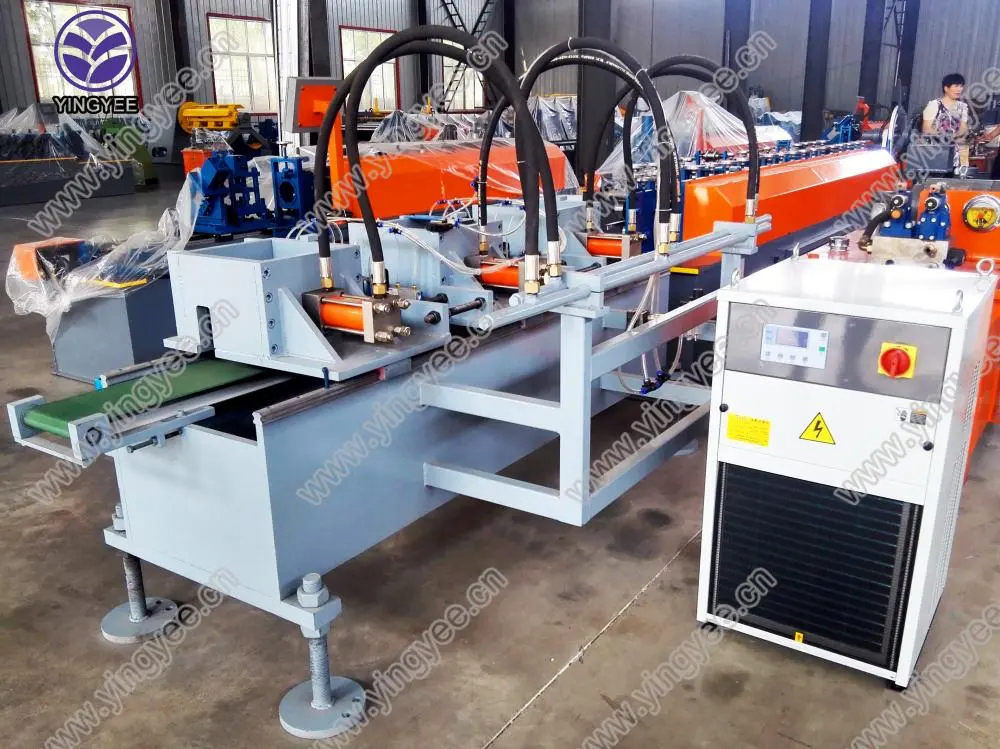
Understanding Steel Coil Straighteners A Comprehensive Guide
In the modern manufacturing landscape, precision and quality are non-negotiable. Whether it's in the automotive, construction, or any metal fabrication industry, ensuring that materials are in their optimal form is crucial for the overall quality of the final product. One pivotal piece of machinery that plays a significant role in this process is the steel coil straightener. This article delves into what steel coil straighteners are, their working principles, benefits, and applications.
What is a Steel Coil Straightener?
A steel coil straightener is a specialized machine designed to remove the curvature and twisting from steel coils, ensuring that the material is flat and uniform. Steel, while strong and durable, often comes with inherent stresses from manufacturing processes, which can lead to coiling or distortion. The straightener processes these coils, making them suitable for further processing, such as cutting, welding, or fabrication.
How Does a Steel Coil Straightener Work?
The operation of a steel coil straightener involves several steps. First, the steel coil is fed into the machine, where it is aligned and positioned properly. As the coil is unwound, it passes through a series of rollers or straightening rolls set at various angles. These rollers exert pressure on the material, gradually adjusting it to the desired flatness.
The design of the rollers is critical. They can be configured in different ways—some straighteners utilize a set of pinch rolls, while others may employ a series of top and bottom rollers. The combination of tension and pressure applied by these rollers effectively reshapes the coil. Advanced machines may include automatic controls and sensors to monitor the flatness and adjust the pressure accordingly for optimal results.
Benefits of Steel Coil Straighteners
The use of steel coil straighteners in manufacturing offers several notable advantages

1. Improved Flatness By removing distortions in the steel, straighteners ensure a higher degree of flatness in the material. This is particularly important in applications where precision is critical, such as in the automotive industry.
2. Enhanced Quality Materials that have been straightened are less likely to warp during subsequent processing, leading to a reduction in waste and higher quality finished products.
3. Time Efficiency Steel coil straighteners can process large volumes of material quickly. This efficiency is vital in high-demand manufacturing environments where time is money.
4. Customization Many modern straighteners are adjustable and can accommodate various coil thicknesses and widths. This versatility allows manufacturers to work with different types of materials without needing multiple machines.
5. Cost-Effectiveness By minimizing material wastage and enhancing the quality of output, steel coil straighteners contribute to cost savings in the long run, making them a worthy investment for manufacturers.
Applications of Steel Coil Straighteners
Steel coil straighteners find applications across a wide range of industries. In the automotive sector, for example, straightened steel is crucial for producing parts that fit together precisely. In construction, flat steel coils are used for structural components, ensuring the strength and integrity of buildings. Other industries, such as appliance manufacturing and metal fabrication, also rely heavily on straighteners to achieve the necessary material quality.
Conclusion
In conclusion, steel coil straighteners are essential tools in the metalworking industry, facilitating the production of high-quality, flat steel materials. By understanding their operation, benefits, and applications, manufacturers can better appreciate the role that these machines play in enhancing their production processes. As technology continues to evolve, the capabilities of steel coil straighteners will likely expand, further increasing their importance in the manufacturing landscape. Investing in a good steel coil straightener can ultimately lead to improved efficiency, higher quality products, and greater customer satisfaction.